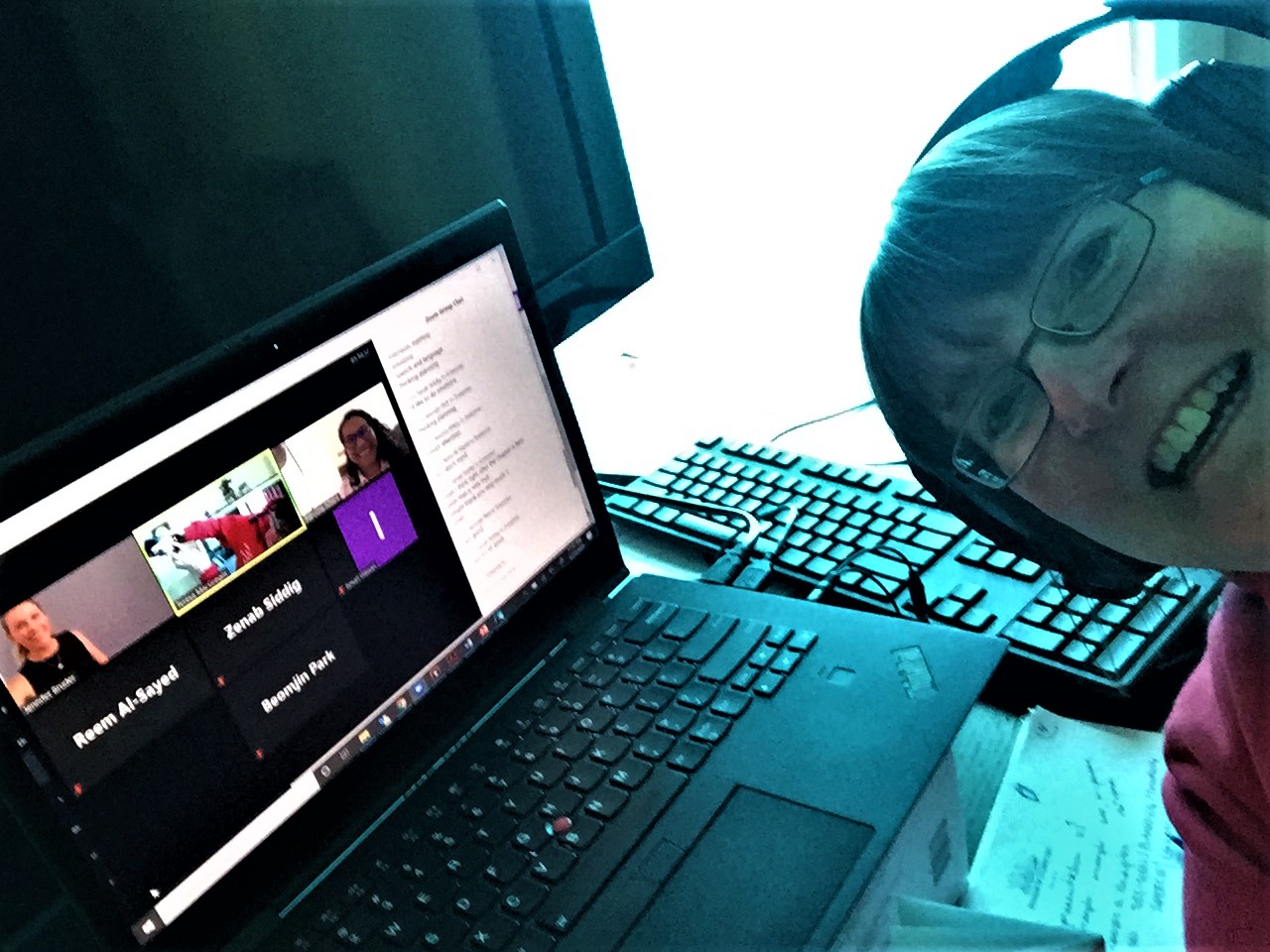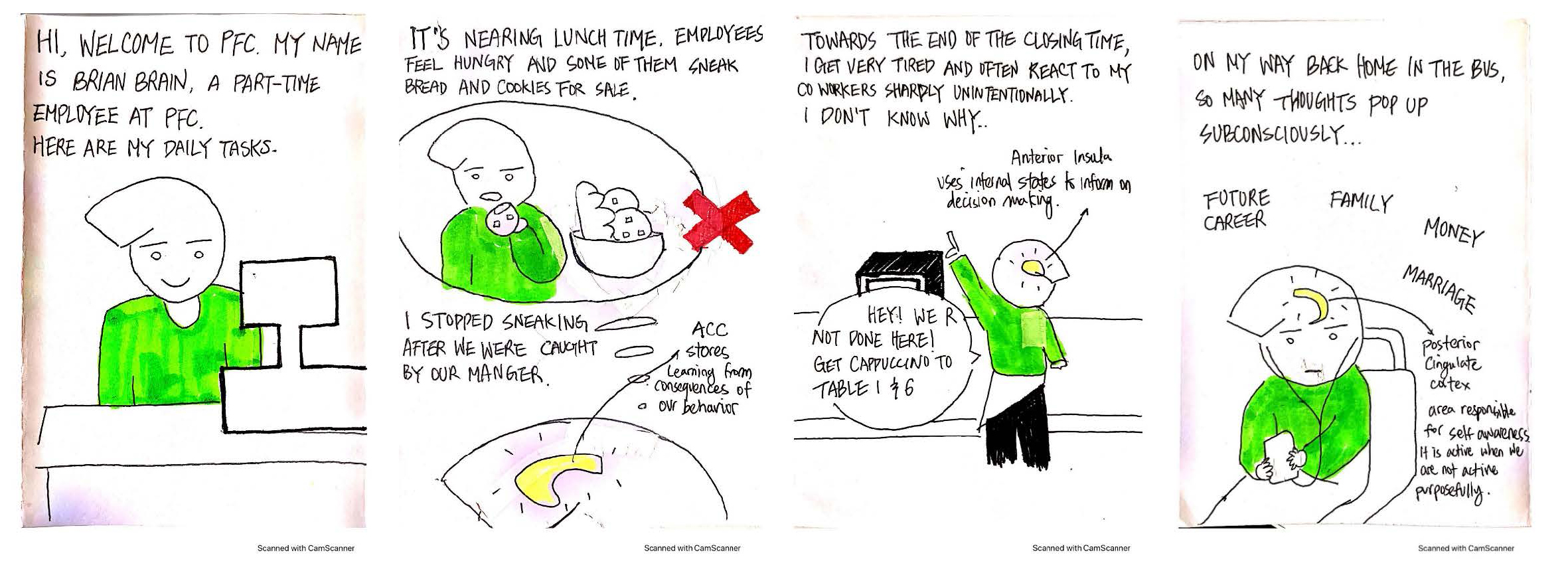
In early February 2020 (seems like a lifetime ago!), the Qatar-campus Library hosted two VIP guests from the main campus Library – Jill Chisnell, Integrated Media and Design Librarian, and Dom Jebbia, Digital Collections Associate. During their visit, Jill and Dom delivered a well-attended workshop on zine making and met with faculty members about incorporating zines and other creative learning techniques into their courses. Shortly after we waved goodbye to our guests, two instructors (Jennifer Bruder and Nesrine Affara) requested a zine-making workshop for their Spring semester course – Systems Neuroscience. The idea was to use zines as a way for students to create and share study guides for the final exam. Scheduled for Wednesday 18 March, I was ready to haul a tub full of scissors, markers, glue sticks, and old science magazines to the classroom. However, on Tuesday 10 March, the Ministry of Education closed all school buildings in Qatar and moved everyone to remote teaching. Yikes!
At that point, I assumed the zine-making assignment would be yet another victim of the coronavirus. However, Qatar-campus instructors are indefatigable! Professors Bruder and Affara asked if I could adapt the class to our new online instruction environment. Librarians are indefatigable, too, so with Jill's assistance I pulled together a short Power Point presentation on the history and culture of zines, then I created a zine template in MS Word and a sample zine on systems neuroscience topics (Thanks, Google!). The instructors uploaded the template, my zine, and a short video for students to view before class to Canvas. Then on Monday 23 March – less than one week after the original date – we were all ready to make 'Zines that Zoom!'
 During the Zoom session, I reviewed the short presentation, including the correct pronunciation ('zeen') and a quick definition (handmade self-published magazine). Then we reviewed the template and my silly neuroscience zine. After that, we all took a piece of paper and a pair of scissors and practiced folding and cutting the zines together on camera. Class ended after the students volunteered for topics and received their due dates.
During the Zoom session, I reviewed the short presentation, including the correct pronunciation ('zeen') and a quick definition (handmade self-published magazine). Then we reviewed the template and my silly neuroscience zine. After that, we all took a piece of paper and a pair of scissors and practiced folding and cutting the zines together on camera. Class ended after the students volunteered for topics and received their due dates.
Two weeks later, the first students submitted their zines on Attention and Memory. Wow! The designs and layouts were impressive and unique. Unfortunately, due to scheduling conflicts, I missed their presentations. However, I was able to attend the next Zoom class session with zines on Emotion and Thinking/Planning/Decision-Making. Again, I was blown away by the students' creativity and understanding of their topics. You can view the students' zines (and my practice zine) on Box.
Feedback from both the instructors and students on the assignment was positive. Professor Bruder said, 'I'm proud of the students for their refreshing creativity and effort – each and every zine made us laugh together, learn together, and think together. Overall, the zine project demonstrates that, even in the most unusual of circumstances, there is space for exploration, interactivity, and creative learning to be found. Zines are a powerful learning tool, and I look forward to using them in future scenarios.' Professor Affara said, 'Students appreciated the idea of going outside of their comfort zone and trying something they have never done before.' Student Ismail Hassan (Biological Sciences) said, 'I discovered zine making was an excellent way to remember complicated concepts. It's going to be part of my exam-review sessions from now on!' I am hopeful that this will be the first of more 'Zines that Zoom' assignments during online instruction, and also that we can return to the building and make good ol' fashioned cut and glue zines together in person again soon.
Want to try making a zine yourself? Check out the instructions for creating and sharing a Quaranzine about your life during the pandemic at https://guides.library.cmu.edu/quaranzines/home.
Teresa MacGregor
Director of the Library, Qatar Campus
